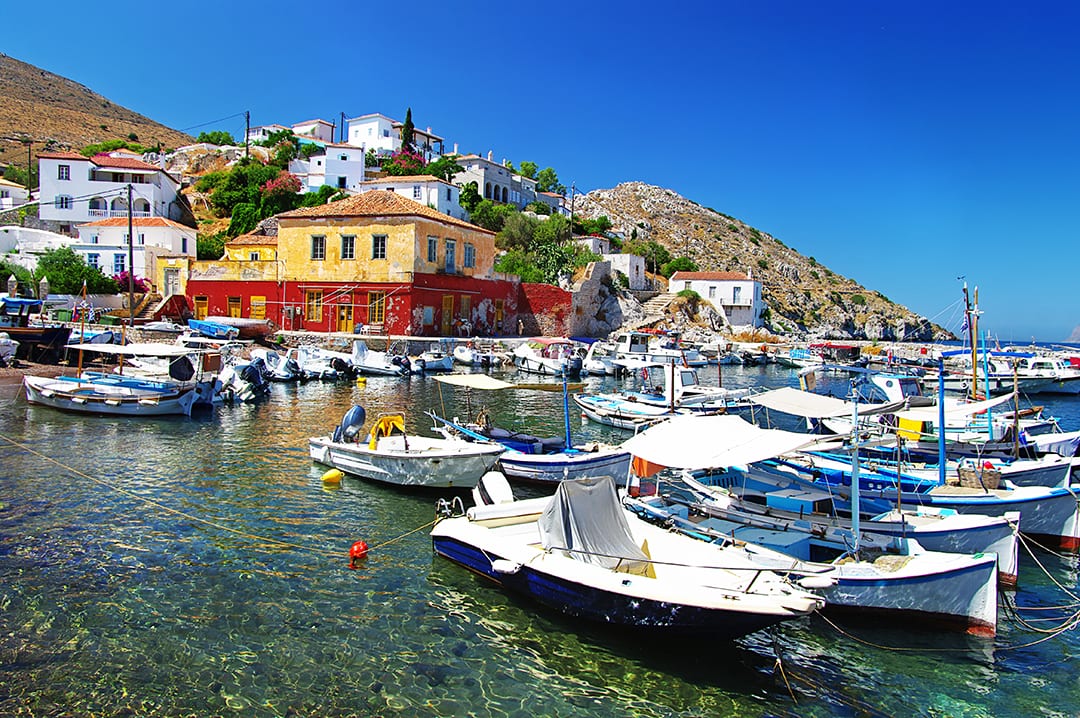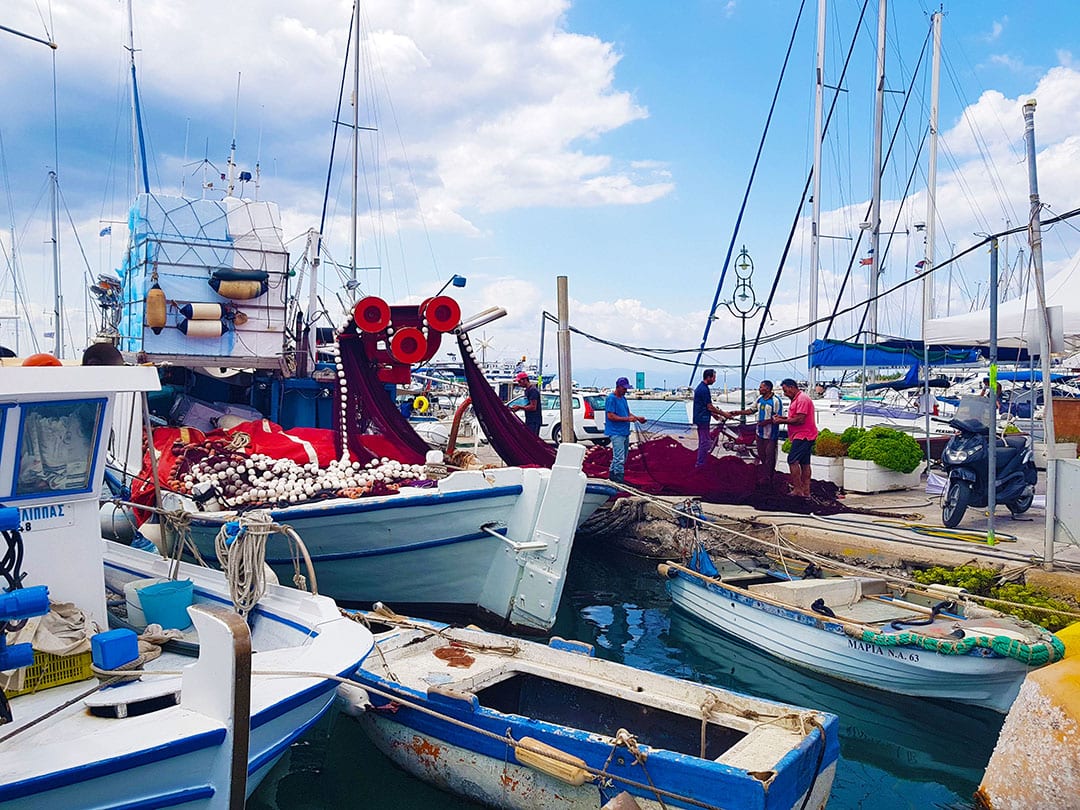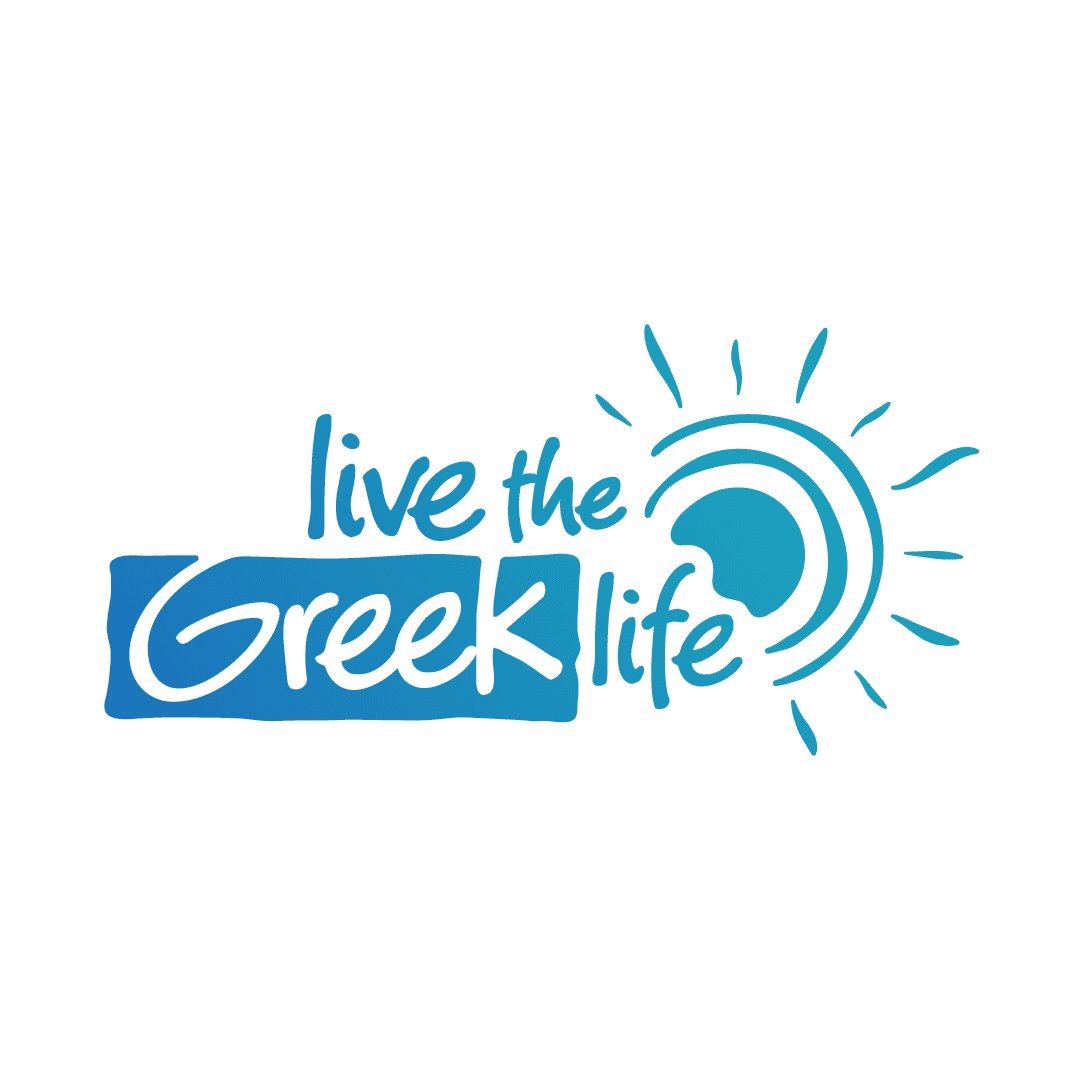
All you need to know about Hydra island!
One of the most cosmopolitan Greek islands is the picturesque island of Hydra; boasting elegant architecture, enchanting villages, and a serene atmosphere. What makes this island extra special is its car ban. Due to this ‘no vehicle’ policy, the island is void of pollution and traffic and instead is filled with; locals on donkeys, pristinely kept streets, and fresh air. This remarkable island is a paradise for all the senses!
Background
The historical record on Hydra is rather sparse, however there are still some amazing landmarks to visit on the island. Hydra is also known to have some outstanding museums that are definitely worthy of a visit.

Sightseeing highlights of the island include:
The Bastion: The imposing bastion with it’s canons was built in the 18th century. They were used to protect the harbour during wartime and pirate raids. The bastion provides one of the most spectacular views of the Saronic Gulf.
Historical Archives Museum: The museum was founded in 1918 and was renovated in 1996. It is housed in an elegant stone mansion and contains the island’s historical archives, relics from WWl, WWll and the Balkan Wars, and a selection of folklore antiques.
Ecclesiastical Museum/ The Church of Assumption: The Ecclesiastical Museum is housed in the island’s Church of Assumption, also known as The Cathedral of Hydra. It was built in 1648 and was reconstructed in 1774. It contains exhibits of rare Byzantine icons, clerk relics, and Holy gospels.
The Monastery of Agia Efpraxia: This simple but striking monastery is an all-female convent, originally built in 1865. It sits at an altitude of 500 meters and therefore offers breathtaking views of the island.
The Monastery of Prophet Elias: This magnificent monastery is located 500 meters above sea level and can be reached by a two-hour hike from the port. It was established in 1813 by 13 monks who constructed the monastery on top of the ruins of a previous chapel. The monastery is the only all-male monastery on the island. Both the hike to the monastery and the landmark itself are very scenic.
Beaches
Most of Hydra’s beaches are pebbled bays or rocky coves with deep azure waters. Some are located quite a long hike away from the island’s center, however, there are excursion boats and taxi boats that go back and forth between the beaches frequently.
Vlichos: 2km West of Hydra town. Reachable by foot or taxi boat. Pebbled beach with a rugged sea bed and azure waters. Great tavernas are nearby. This quiet beach is a great spot for snorkeling.
Kaminia: 1km west of Hydra town. A small fisherman’s port with a tiny pebble beach and turquoise waters.
Spilia: A short walk from the main harbor. This rocky area with cemented sun decks is a great area for swimming. Deep blue waters.
Hydroneta: A short walking distance from Hydra town. This is a rocky swimming area with cemented sun decks. Its deep waters are perfect for swimming and snorkeling. There is a fantastic bar perched upon the rocks that play ambient music and offers snacks and drinks around the clock. This rocky beach provides spectacular sea views.
Avlaki: Located on the eastern side of the island. This small pebbled cove is engulfed by white-faced cliffs and lush green foliage. The deep blue waters are fantastic for snorkeling and swimming.
Bisti: On the western side of the island is the pebbled bay of Bitsi. It has emerald waters and a lush green backdrop.
Molos: 1-hour walk from Hydra town. This blonde pebbled beach is organized and has clean blue waters.
Local cuisine A specialty product of Hydra is its almond sweets called Amigdalota. Hydra does not have any particular gastronomic traditions, however due to the island’s rocky shoreline, this is the perfect island to taste some sublime seafood!
Notable events and festivals Easter:
Hydra boasts impressive and exciting Easter celebrations. On Holy Friday, after the Easter litanies, the priest walks to the island’s harbour and enters the sea to bless it. On Easter Sunday, the ‘burning of Judas’ takes place on the port and is followed by fireworks, music, dancing and traditional food and local wine.
November 14th: The largest religious celebration of the island is the feast in honor of the island’s patron saint, Agios Konstantinos. After the religious ceremonies and traditions have been completed; dancing, music, traditional food and local wine flow all night.
Summer: Throughout the whole of summer, the Hydrama Theater and Arts Center organizes a series of cultural events including; music concerts, theater performances, art exhibitions and workshops.


